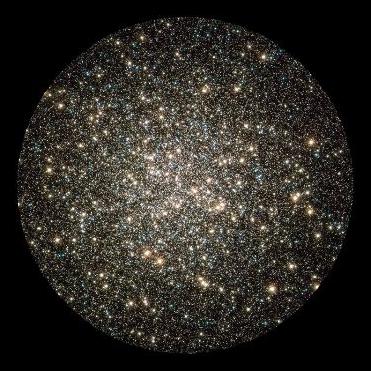
Hubble ACS/WFPC2 Image of Globular Cluster M13. Official photo
WASHINGTON (BNS): For star gazers, there is some celestial delight in the winter sky. US space agency NASA’s Hubble Telescope has captured a glittering metropolis of stars that can easily be found in the constellation Hercules and can be seen even with naked eye under the dark skies.
The space telescope recently caught a glimpse of hundreds of thousands of stars moving about in the globular cluster M13, one of the brightest and best-known globular clusters in the northern sky. It looked like a whirl of shiny flakes sparkling in a snow globe.
NASA said the Hubble captured the image with the Wide Field Planetary Camera 2 and the Advanced Camera for Surveys. The captured image is a composite of archival Hubble data taken from observations from four separate science proposals taken in November 1999, April 2000, August 2005, and April 2006.
The science agency said the image includes broadband filters that isolate light from the blue, visible, and infrared portions of the spectrum.
M13 is home to over 100,000 stars and located at a distance of 25,000 light-years. These stars are packed so closely together in a ball, approximately 150 light-years across, that they will spend their entire lives whirling around in the cluster.
"Near the core of this cluster, the density of stars is about a hundred times greater than the density in the neighbourhood of the Sun. These stars are so crowded that they can, at times, slam into each other and even form a new star, called a blue straggler," NASA said.
Describing the stars and its appearances, the brightest reddish stars in the cluster are ancient red giants. These aging stars have expanded to many times their original diameters and cooled. The blue-white stars are the hottest in the cluster, it said.
Globular clusters can be found spread largely in a vast halo around the galaxy. M13 is one of nearly 150 known globular clusters surrounding the Milky Way galaxy.
"Globular clusters have some of the oldest stars in the universe. They were formed likely before the disk of Milky Way, so they are older than nearly all other stars in the galaxy. Studying globular clusters therefore tells us about the history of the galaxy," NASA said.
 Previous Article
Previous Article













The Indian Air Force, in its flight trials evaluation report submitted before the Defence Ministry l..
view articleAn insight into the Medium Multi-Role Combat Aircraft competition...
view articleSky enthusiasts can now spot the International Space Station (ISS) commanded by Indian-American astr..
view article